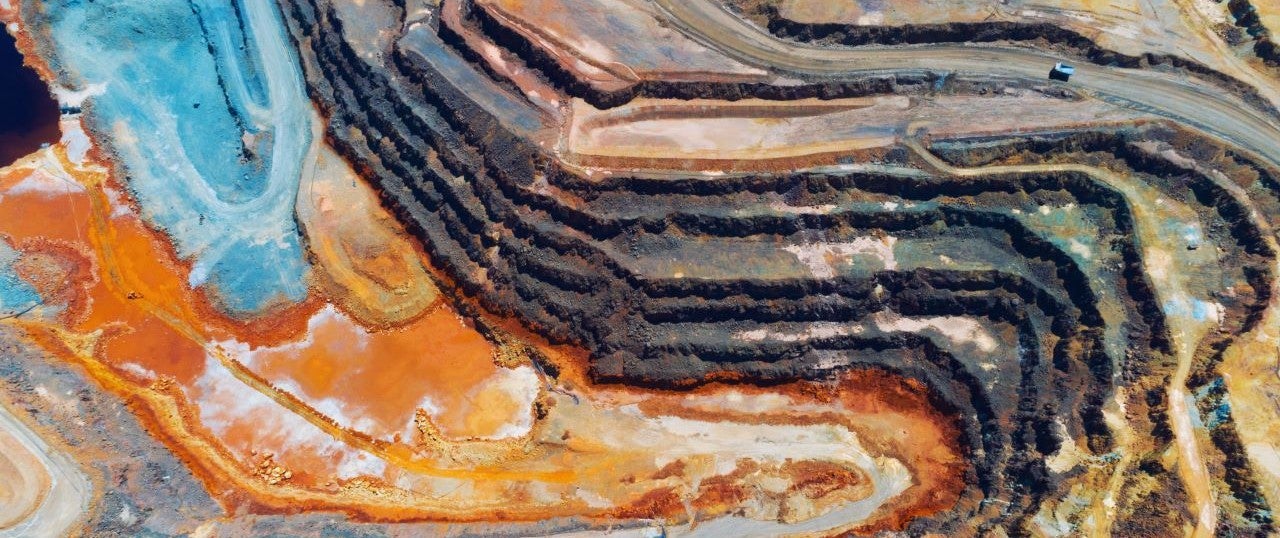
“A 0.1 g/t gold grade error in a break-even grade can destroy half of the value of an Ore Reserve”
It’s time to take a fresh look at how break-even grades are calculated and used in mining studies and Ore Reserve estimates. An error of just 0.1 g/t in the cut-off grade (COG) of a large-scale open-pit gold mine can result in over 50 percent of the Ore Reserve having zero value. Worryingly, this scale of error is not exceptional—in fact, it’s quite common. The evidence suggests that many operations, large and small, are using subeconomic cut-off grades.
Hidden complexities
Most companies use a break-even grade (BEG) as their COG, but they are mostly unaware of the issues it can cause. BEG is defined as the grade at which revenue generated is equal to production cost:

The simplicity of this equation belies the complexities of how each variable is or should be calculated—in particular, which costs should be included and how cost, recovery, and payability can be functions of grade.
The impacts of these hidden complexities might be mathematically small when expressed as a grade, but even minuscule changes in COG can result in massive changes to tonnage. This means that a significant portion of most Ore Reserves are marginal in value, which isn’t apparent in a global Ore Reserve statement.
Let’s take a look at a real-world example. Figures 1 and 2 are anonymized distributions for a large, low-grade, open-pit gold mine. These distributions are typical for reserves that use the BEG to estimate an Ore Reserve. Figure 1 shows the percentage of value in each increment of net value, and Figure 2 shows the corresponding percentage of tonnage for each increment.


Note that the bottom 27% of the Ore Reserve tonnage holds only 6% of the value, while the top 27% of the Ore Reserve holds 60% of the value. Significantly, over 50% of the Ore Reserve tonnage is of low or marginal value.
This means that a small error, plus or minus, in calculating the BEG translates into a significant addition or reduction in the reserve tonnage. Importantly, if the BEG is underestimated (i.e. ore at the BEG has a negative value), then a significant portion of the reserve will be mined with a negative contribution to the cash flow.

Figure 3 shows the effect of a 5 $/t error in the BEG calculation, in which 27% of the Ore Reserve now has a negative value. The 0–5 $/t portion of the reserve should be contributing to the value of the project, but its value is offset by the cost of the subgrade portion. When these two portions are combined, 55% of the Ore Reserve has an effective value of $0.
At a gold price of 1,650 $/oz, a $5/t error translates into cut-off grade error of 0.1 g/t. Hence, an error of 0.1 g/t in the BEG calculation of a large, low-grade, open-pit gold mine can result in 50–60% of the Ore Reserve having zero value.[1] [1] It should be noted that although the conventional concept of BEG is flawed, the resulting ore reserves are not necessarily invalid. The JORC Code only requires that the ore reserve is shown to be “economically mineable” (JORC 2012). JORC only requires that the total ore reserve must be economically mineable and does not say anything about having to exclude negative value material.
Common errors
In his paperi on “negatively geared” reserves, Poniewierski explains that the most common errors in calculating BEG are:
- Assumption that recovery is a constant for all head grades
- Omission of sustaining capital costs
On the first issue, consider a mine with a head grade of 2.2 g/t and recovery of 94% at that grade. At a fixed 94% recovery, the break-even grade works out to be 0.4 g/t with a tails grade of 0.02 g/t. The problem is that a head grade of 2.2 g/t we have a tails grade of 0.13 g/t. Instead of a fixed recovery, if a fixed tails grade is used, at the same price and cost conditions, the BEG works out to be more than 0.5 g/t.

If a 0.1 g/t error in the BEG can nullify 50–60% of the Ore Reserve, imagine what a 0.5 g/t error will do. Research of JORC Table 1 ASX releases shows that a large percentage of Ore Reserve cut-off grades are calculated with fixed recovery rates.
The second issue, omission of sustaining capital costs, can result in a significant underestimation of the true cost of mining and processing ore, and therefore the BEG. Sustaining capital is expenditure that maintains existing capabilities, as opposed to project capital, that is used to add capabilities or capacity. Mines capitalise these costs so that they can use depreciation to spread them out over the useful lifetime of the equipment being maintained. However, regardless how the cost is treated for tax purposes, sustaining capital needs to be included in the cut-off grade calculation.
For example, in the context of BEG, other than the magnitude of the costs, there is no difference between replacing an oil filter every 50 hours (an operating cost) and replacing a truck engine every 16,000 hours (a capital cost), or even replacing a truck every 50,000 hours (a capital cost).
Optimizing COG
There is significant potential for error in all inputs to the BEG calculation and the only true method of determining the BEG is to financially model a set of scenarios with varying cut-off grades and production rates. Figure 4 shows how the undiscounted cashflow can be expected to peak at a particular COG. This is the true BEG. Above this grade, valuable material is excluded from the Ore Reserve; below this grade, unprofitable material is included in the Ore Reserve.

The peak undiscounted cash flow shown in Figure 4 will result in the highest NPV for the project under a defined set of operating conditions. These conditions, however, change over the life of the project and, hence, so does the BEG. Hence, the optimum COG isn’t a constant over the life of the mine.
There is a perception in the mining industry that increasing COG above the BEG results in high-grading the resource –that is, picking the eyes out of a resource and destroying potential value. But the notion of high-grading or subgrading oversimplifies the problem; instead, the focus needs to be on “right-grading”. Right-grading excludes loss-making material by employing a properly engineered mine plan that delivers the company’s goals.
Working out the optimum COG strategy needs to move on from simplistic, back-of-envelope calculations. COG should not be a predefined input into a study. It needs to be an outcome of a sensitivity analysis that identifies the mining strategy and COG that deliver the best result for the shareholders in accordance with the company’s stated goals.
Regardless of whether your project is under development or in operation, the impact of a flawed COG can be massive. This poses an important question for many mining operations: is your COG strategy destroying value?
Take the next step
To learn more about optimizing your COG strategy, fill in the contact form below and a representative from AMC Advisory from your local AMC office will be happy to set up a meeting. You’ll also find some useful background reading on the BEG calculation and COG strategies in on the page listed below.
For further information, please visit AMC Consultants Advisory Service


